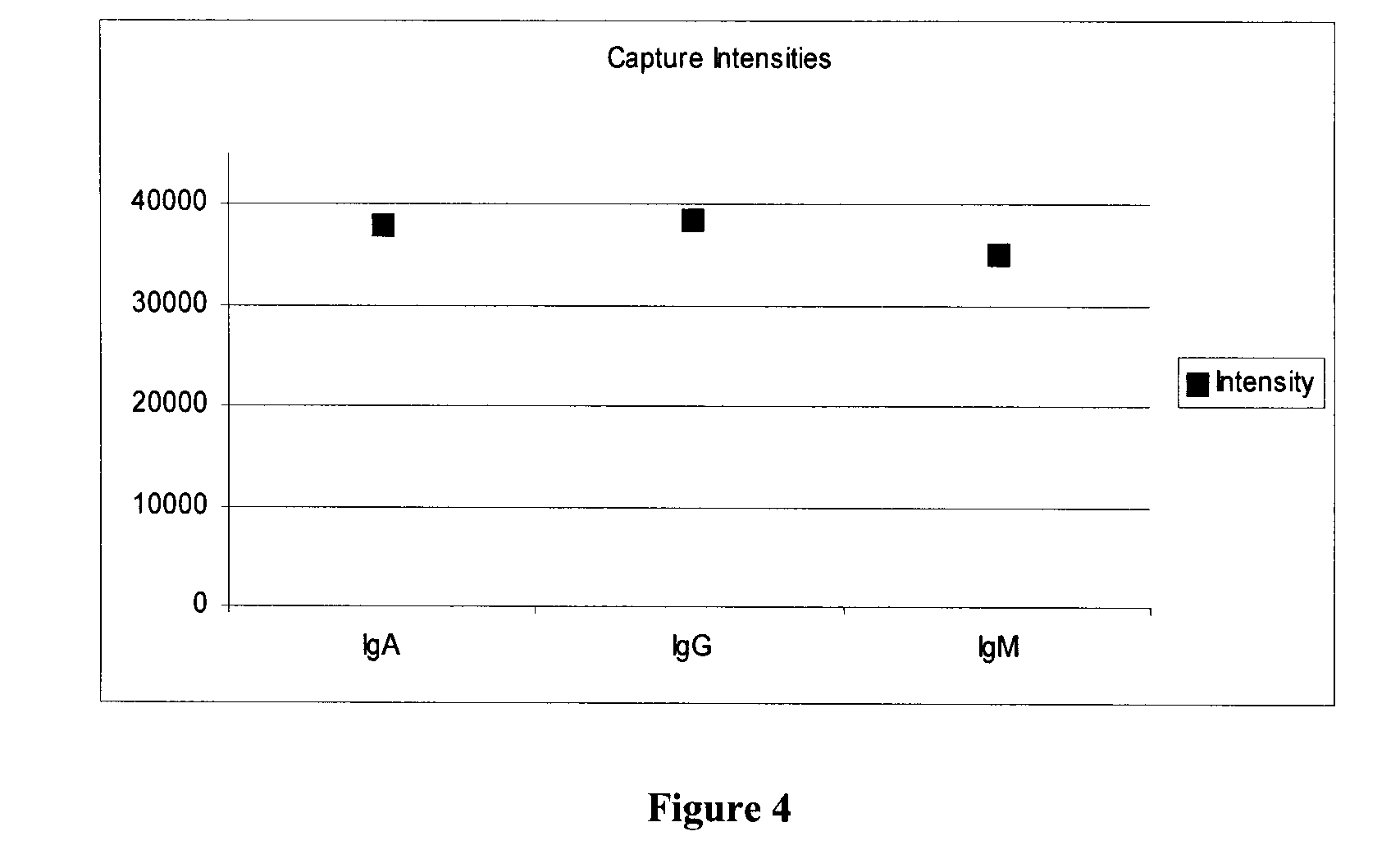Methods for multiplex analyte detection and quantification
a multiplex analyte and quantification technology, applied in combinational chemistry, chemical libraries, instruments, etc., can solve the problems of increasing the delay in treatment time, increasing the cost and possibility of analytical errors, and major limitation of detecting diseases with more, so as to achieve fast and cost-effective methods
- Summary
- Abstract
- Description
- Claims
- Application Information
AI Technical Summary
Benefits of technology
Problems solved by technology
Method used
Image
Examples
Embodiment Construction
Detection and Quantification of Three Different Target Antibodies in a Serum Sample
[0068]Four concentrations each of human IgM, IgG, IgA are printed in the same sample well on a 16-well slide, pretreated to create an epoxysilane substrate surface. The protein printed slides were incubated overnight with fish gelatin to block unreacted epoxysilane binding sites in the well.
[0069]To perform the assay, serum samples were diluted 1 in 9 to 1 in 200 in buffers containing fish gelatin. Each sample was diluted to four dilutions, 1:9, 1:30, 1:100, 1:300 in duplicate. The two diluted samples (named NS and RF #3, see FIGS. 2 and 3) were incubated for 45 min. The slide was washed five times, in Tris buffered saline. A cocktail of goat antihuman antibody conjugated to FITC, two mouse antihuman IgA antibodies conjugated to DY652 (Dyomics, Germany), and a mouse antihuman IgG antibody conjugated to Cy3 dye, each in about 1 μg / ml concentration, was added to all wells of the slide.
[0070]The reagent ...
PUM
 Login to View More
Login to View More Abstract
Description
Claims
Application Information
 Login to View More
Login to View More - R&D
- Intellectual Property
- Life Sciences
- Materials
- Tech Scout
- Unparalleled Data Quality
- Higher Quality Content
- 60% Fewer Hallucinations
Browse by: Latest US Patents, China's latest patents, Technical Efficacy Thesaurus, Application Domain, Technology Topic, Popular Technical Reports.
© 2025 PatSnap. All rights reserved.Legal|Privacy policy|Modern Slavery Act Transparency Statement|Sitemap|About US| Contact US: help@patsnap.com



